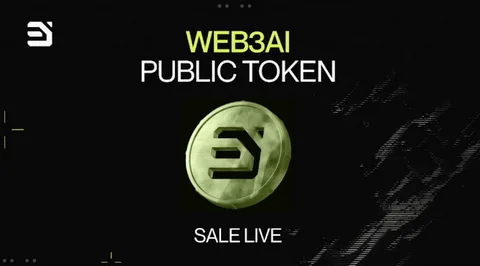Introduction
The world of cryptocurrency is a dynamic and fast-paced environment where massive transactions are not uncommon. However, when we hear of over $1 billion in ETH traded in just 24 hours, it demands attention.
Ethereum, the second-largest cryptocurrency by market capitalization, has established itself as a crucial player in the digital finance space. But what does it mean when such a staggering amount is traded in a single day?
In this post, we will dive deep into the significance of this trading volume, the factors driving such activity, and what it means for investors and the future of ETH.

Understanding Ethereum: A Brief Overview
Before diving into the implications of over $1 billion in ETH traded in just 24 hours, it’s essential to understand what Ethereum is and why it commands such high trading volumes. Ethereum is not just a cryptocurrency; it is a decentralized platform that allows developers to build and deploy smart contracts and decentralized applications (DApps).
Launched in 2015 by Vitalik Buterin, Ethereum has become the foundation for numerous blockchain projects, thanks to its robust ecosystem and the flexibility it offers developers.
Ethereum operates on a blockchain similar to Bitcoin, but its potential goes beyond simple peer-to-peer transactions. The platform’s ability to support smart contracts—self-executing contracts with the terms of the agreement directly written into code—makes it revolutionary. This feature has attracted various industries, from finance to real estate, seeking to leverage the benefits of blockchain technology.
The trading volume of ETH often reflects its utility in the crypto space. High volumes indicate that there is significant interest in the asset, whether it be from traders, investors, or institutions. Over $1 billion in ETH being traded in a single day suggests a high level of activity, possibly due to several factors we will explore in this article.
Section 1: The Significance of $1 Billion in Ethereum Trading Volume
To grasp the importance of over $1 billion in ETH traded within 24 hours, we need to consider several factors. Firstly, such a volume signifies intense market activity. High trading volumes are typically associated with either bullish or bearish sentiment. In the case of ETH, it could mean that investors are either flocking to buy the asset in anticipation of price appreciation or selling off in response to market developments.
Additionally, high trading volumes can indicate liquidity in the market. Liquidity is crucial for any asset, as it ensures that large transactions can be executed without significantly impacting the asset’s price. For Ethereum, high liquidity suggests that there is enough demand to absorb large trades, making it a more stable and attractive investment option.
Furthermore, over $1 billion in ETH trading volume within 24 hours might also point to institutional interest. Institutional investors, such as hedge funds, pension funds, and large corporations, are increasingly looking at ETH as a viable investment. Their participation often results in significant trades that contribute to the overall volume. This level of institutional involvement is a strong indicator of Ethereum’s growing importance in the financial world.
Finally, such a high trading volume could be a response to specific news or events. For example, announcements related to Ethereum’s technological upgrades, such as the transition to Ethereum 2.0, or regulatory developments could trigger a surge in trading activity. Investors may react to these events by buying or selling large amounts of ETH, leading to a spike in volume.
Section 2: Factors Driving Ethereum’s High Trading Volume
Several factors contribute to Ethereum’s ability to reach over $1 billion in trading volume within a short period. Understanding these drivers can provide insights into the current market dynamics and future trends.
1. Market Sentiment and Speculation:
The cryptocurrency market is highly speculative, with prices often driven by sentiment rather than fundamentals. News, rumors, and social media trends can significantly impact investor behavior. When positive news surrounds ETH—such as updates on its technological advancements, partnerships, or adoption by mainstream financial institutions—investors may rush to buy ETH, leading to a spike in trading volume. Conversely, negative news or regulatory crackdowns can lead to a sell-off, also driving high trading volumes.
2. Technological Developments:
Ethereum’s ongoing development is a significant factor in its trading activity. The transition to ETH 2.0, which promises to improve scalability, security, and energy efficiency, has generated considerable excitement in the crypto community.
As these upgrades progress, market participants often adjust their positions, leading to increased trading activity. For example, the successful implementation of the Merge, which marked Ethereum’s shift from a Proof of Work (PoW) to a Proof of Stake (PoS) consensus mechanism, likely contributed to a surge in trading volume.
3. Institutional Involvement:
As mentioned earlier, institutional interest in ETH is growing. Companies like Grayscale offer Ethereum investment products, allowing institutional investors to gain exposure to ETH without holding the asset directly.
Additionally, ETH-based ETFs (Exchange-Traded Funds) have been introduced in various markets, further increasing institutional participation. This influx of institutional money can lead to large transactions that drive up trading volume.
4. Decentralized Finance (DeFi) and Non-Fungible Tokens (NFTs):
Ethereum is the backbone of the DeFi and NFT ecosystems, both of which have seen explosive growth in recent years. DeFi platforms, which offer financial services like lending, borrowing, and trading without intermediaries, rely heavily on Ethereum.
The same goes for NFTs, which are primarily issued on the Ethereum blockchain. The booming activity in these sectors often results in increased demand for ETH, thereby boosting its trading volume.
Section 3: Impact of High Ethereum Trading Volume on the Market
When over $1 billion in Ethereum is traded within 24 hours, it has several implications for the market, both in the short and long term.
1. Price Volatility:
High trading volumes can lead to increased price volatility. In the short term, large buy or sell orders can cause significant price swings, as the market adjusts to absorb these trades. This volatility can be both an opportunity and a risk for traders, depending on their strategies and risk tolerance. For long-term investors, however, short-term volatility may be less concerning if they believe in Ethereum’s long-term potential.
2. Market Liquidity:
As discussed earlier, high trading volumes generally indicate good liquidity. This is beneficial for traders and investors, as it means they can enter and exit positions more easily. For Ethereum, strong liquidity also suggests that the market is healthy and that there is a robust demand for the asset.
3. Institutional Confidence:
Large trading volumes, particularly when driven by institutional activity, can be seen as a vote of confidence in Ethereum’s future. Institutions typically conduct thorough research before making large investments, so their participation can signal that Ethereum is a viable and promising asset. This can attract more investors, further driving up trading volumes and, potentially, the price of ETH.
4. Network Security and Decentralization:
Ethereum’s network security benefits from high trading volumes and active participation. A widely used and traded cryptocurrency tends to be more secure, as there are more nodes and participants verifying transactions. This decentralization is crucial for maintaining the integrity and security of the ETH network, especially as it transitions to ETH 2.0.
Section 4: What This Means for Ethereum’s Future
The occurrence of over $1 billion in ETH being traded in just 24 hours is a testament to the platform’s significance and the growing interest in its ecosystem. This level of activity is likely to continue as ETH evolves and more use cases emerge.
1. Continued Growth in DeFi and NFTs:
As the DeFi and NFT sectors expand, the demand for ETH is expected to grow. These sectors rely heavily on the Ethereum network, and as they mature, more capital is likely to flow into ETH. This could lead to sustained high trading volumes and potentially higher prices over time.
2. Adoption by Mainstream Finance:
Ethereum’s integration into mainstream financial systems is another factor that could drive future growth. With the increasing acceptance of blockchain technology by traditional financial institutions, Ethereum is well-positioned to play a key role in the future of finance. This could lead to more institutional investment and higher trading volumes.
3. Ethereum 2.0 and Beyond:
The successful implementation of Ethereum 2.0 will be a major milestone for the platform. By addressing issues related to scalability and energy consumption, Ethereum 2.0 could attract even more users and developers, leading to further growth in its ecosystem. This, in turn, could result in higher trading volumes and a stronger market presence.
4. Regulatory Developments:
While regulation can be a double-edged sword, clear and favorable regulatory frameworks could benefit Ethereum. If governments and regulators provide a supportive environment for blockchain technology, Ethereum could see increased adoption and investment. However, adverse regulations could lead to volatility and uncertainty in the market.
Conclusion
In conclusion, over $1 billion in Ethereum traded in just 24 hours is a clear indicator of the platform’s significance in the cryptocurrency market. This massive trading volume reflects the growing interest in ETH from both retail and institutional investors, driven by factors such as technological developments, market sentiment, and the expanding DeFi and NFT ecosystems.
As Ethereum continues to evolve and integrate with the broader financial system, we can expect to see even more significant activity in the market.
For investors and enthusiasts alike, understanding the implications of such high trading volumes is crucial. It offers insights into market dynamics, potential opportunities, and the future trajectory of ETH. Whether you are a seasoned trader or a newcomer to the crypto space, staying informed about these developments is essential.
What do you think about the future of Ethereum? Do you believe it will continue to dominate the cryptocurrency market, or do you see challenges ahead? We invite you to share your thoughts and insights in the comments below!






